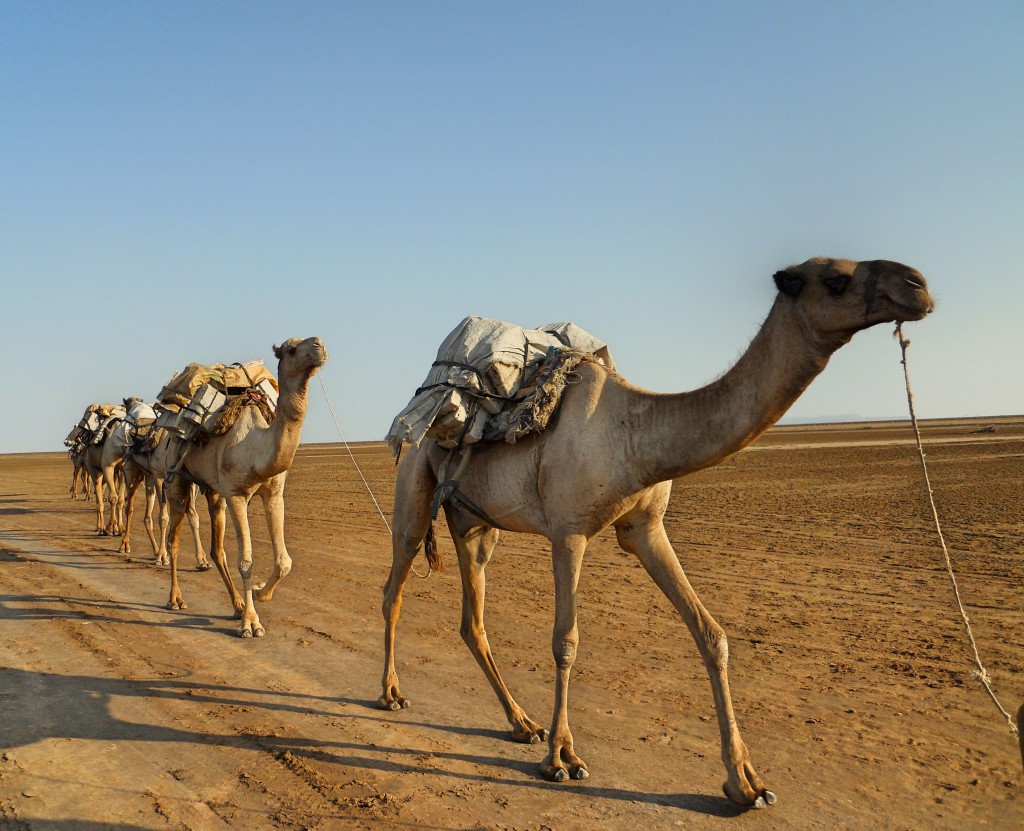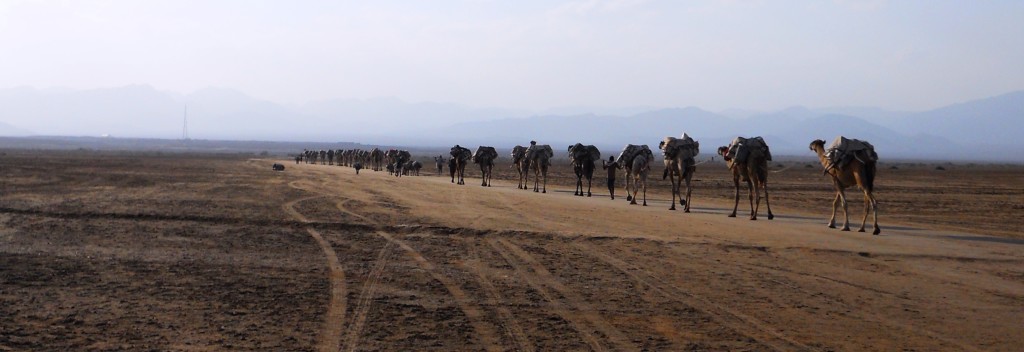This is the second article in the Language Nerd’s series on linguistics in Ethiopia. Intro here, part one here.
So you’re a linguist, and you’ve decided to document a language. Maybe it’s a big language, with millions of speakers; maybe you’ve been invited to a tiny community where the speakers number in the dozens. Maybe you trekked five hours out to the field; maybe you took the subway. Either way, you’re here, you’re ready, you’ve got a language to figure out. What next?
With help from Dr. Binyam Sisay, who documented Koorete, and Dr. Zelealem Leyew, who documented Kemantney, here’s the Language Nerd’s deeply unofficial guide to descriptive fieldwork.
Step 1: Chill. Get your bearings. Look around, get a feel for the place, for the environment, for the routines of daily life. Present yourself to the authorities, be they government officials, group elders, or both. Make sure your purpose is clear.
Step 2: Keep chillin. Don’t jump right into trying to figure out the systems of the language, Dr. Binyam cautions. Take a few days to adjust your ears to the sounds and rhythms of the words and sentences. Meet people, and start recording. Little things at first – who people are, their names and families, likes and dislikes. You’ll have time for politics and theology and quantum physics later. For now, play it cool.
Step 3: Sort out your informants. Different people use language in different ways, so get as wide a variety of language consultants as possible. In particular, talk to as many different age groups as you can. Dr. Binyam’s older speakers were very conservative in their Koorete, while the younger ones innovated and mixed it with the language of the markets, Amharic.
Dr. Zelealem had a more extreme split: the youngest informant he found for Kemantney was 42 years old. The language hadn’t vanished among younger speakers, but they refused to admit they could speak it. See, the Ethiopian Orthodox Church came through in the fifties and converted almost the whole community to Christianity, and the language connected to Christianity was Amharic. Speaking Kemantney is a good way to get labelled as a follower of the older, displaced religion, something these younger speakers are not okay with. He had to approach them carefully to even get them to sit down with him.
Beyond these questions, there’s personality. Some people have language-analyzing minds, and will catch on to what kinds of information you need; others do not, and end up answering brief questions with lengthy tales of the time their brother’s friend caught a fish that was THIS BIG and you really can’t interrupt without being impolite. It happens.
Step 4: Collect a ton of recordings. Linguists still tend to call these “texts,” even though now they’re more likely audio or video, followed by a transcript. Now’s the time to get into politics, local history, recipes, quantum physics, whatever people want to talk about. Even the fish that was THIS BIG although you can really only hear that story so many times, jeez.
Step 5: Analyze! Now we get into the meat of it. There are three systems you need to figure out to write up your grammar – phonology, morphology, and syntax. Your nicer grammars get into pragmatics and maybe even sociolinguistics, but today we’ll stick with these three fundamentals.
Phonology I’ve talked about at some length, here. It’s the sounds of a language. What sounds do the speakers use to make words? Not every language uses the same sounds – very few use our peculiar “th,” for one – and sounds that do get brought into service can be used in different ways.
Morphology* is units of meaning and how they interact with each other. A unit can be a word, but it doesn’t have to be. “Camel” is one word and has one chunk of meaning, but “camels” is one word with two chunks of meaning – the basic “camel” concept and then the information that there’s more than one.
Syntax is how individual bits of meaning are strung together into a larger meaning, a sentence. I touched on this before here. So the sound /k/ is in phonology, the word “camel” is in morphology, and the sentence “Here come some camels” is covered by syntax.
The trick is figuring out these systems from the ground up. In the most intense scenario, you treat the grammar you’re writing as if it is the first grammar ever written in the world, as if you’ve never heard of any other language’s grammar system before. It’s not exactly easy to recreate the entire concept of grammar from scratch, but the minute you start carrying over notions from linguistics class about nouns and verbs and passive tense and conjugation, that’s the minute you miss what’s really happening because you’re blinded by another language’s system.
On the other hand, there’s the pitfall that if you don’t think about what you’ve learned about languages in general, you may be unconsciously bringing in ideas from your native language, be that English or Amharic or whatever. And all known languages do have nouns, so if you start from nothing and invent a group of words called “zwerbles” that are exactly like nouns in every other language, you’re only making things difficult for anyone who reads your work.
To tread this line, many descriptive linguists use what’s called Basic Linguistic Theory, codified by R.M.W. Dixon in his three-volume opus of the same name. This is an accumulation of knowledge, built up over time as people have studied and described thousands of languages, about what’s likely to be important in a language and what’s not. It works better than using a particular pet theory someone dreamed up.**
Step 6: Do an enormous amount of work. Dr. Binyam’s schedule was speaking to his language consultants all morning and early afternoon, then analyzing what they said into the evening and setting up the next day’s questions. Some prefer to do all the collecting first and analyze after, but doing both at once, while exhausting, gives you a much better way to guide your work. If you look over your notes of the day and see that a particular word ending is cropping up when speakers refer to more than one of something, you know that for the next day you want to set up questions involving one camel, then two camels, then sixteen camels, so you can see if it’s a plural marker.
Step 7: Eureka! As you work your way through a new language, the world’s greatest living jigsaw puzzle, pieces fall into place! It starts making sense! This goes here, that fits there!
Step 8: Tragedy! Learn more, collect more data, and watch your theories fall to pieces. Swear effusively.***
Step 9: Repeat steps 6-9. Many, many, many times. Eventually, things will click and stay there. Since you’re working on three different systems at once – phonology, morphology, and syntax – and each of those has many interlocking parts, it’s not so much one big breakthrough as it is many different mini-eurekas.
Step 10: Go home. Write up everything you learned into a huge text, probably your PhD dissertation. Realize where all the holes are, and yes, there will be holes. You’ve missed some things, and misinterpreted others. Make a list.
Step 11: Go back. Fill the holes.
Step 12: Go home again. Rewrite. Repeat step 11 as needed.
Step 13: Publish your work. Then take a nap.
As always, best of luck.
Yours,
The Language Nerd
*I can’t believe I’ve been running this site for three years and I’ve never even written the word “morpheme.” That’s ridiculous. I talk about phonology all the time, and I like morphology so much more than phonology. To be rectified pronto.
**Some linguists do take the opposite tack and come into describing a language with a theory in mind, but this is iffy. If you love, say, Optimality Theory, and show up thinking about Optimality Theory, and describe a language in terms of Optimality Theory, and then argue that the description shows that Optimality Theory is viable, then it gets pretty circular pretty fast. Mostly people try to describe without a pre-ordained framework, then see if the data works with Optimality Theory after.
***Probably not Dr. Zelealem, who seems much too genteel to swear. But I sure would.
Got a language question? Ask the Language Nerd! asktheleagueofnerds@gmail.com
Twitter @AskTheLeague / facebook.com/asktheleagueofnerds
My references this time are interviews with the very kind Drs. Binyam Sisay and Zelealem Leyew, supplemented by Dixon. The linguists of Addis Ababa University are not only out doing fascinating research, they’re incredibly welcoming to an independent nerdy doofus (me). Next post, Dr. Moges Yigezu on revitalizing an endangered language.

